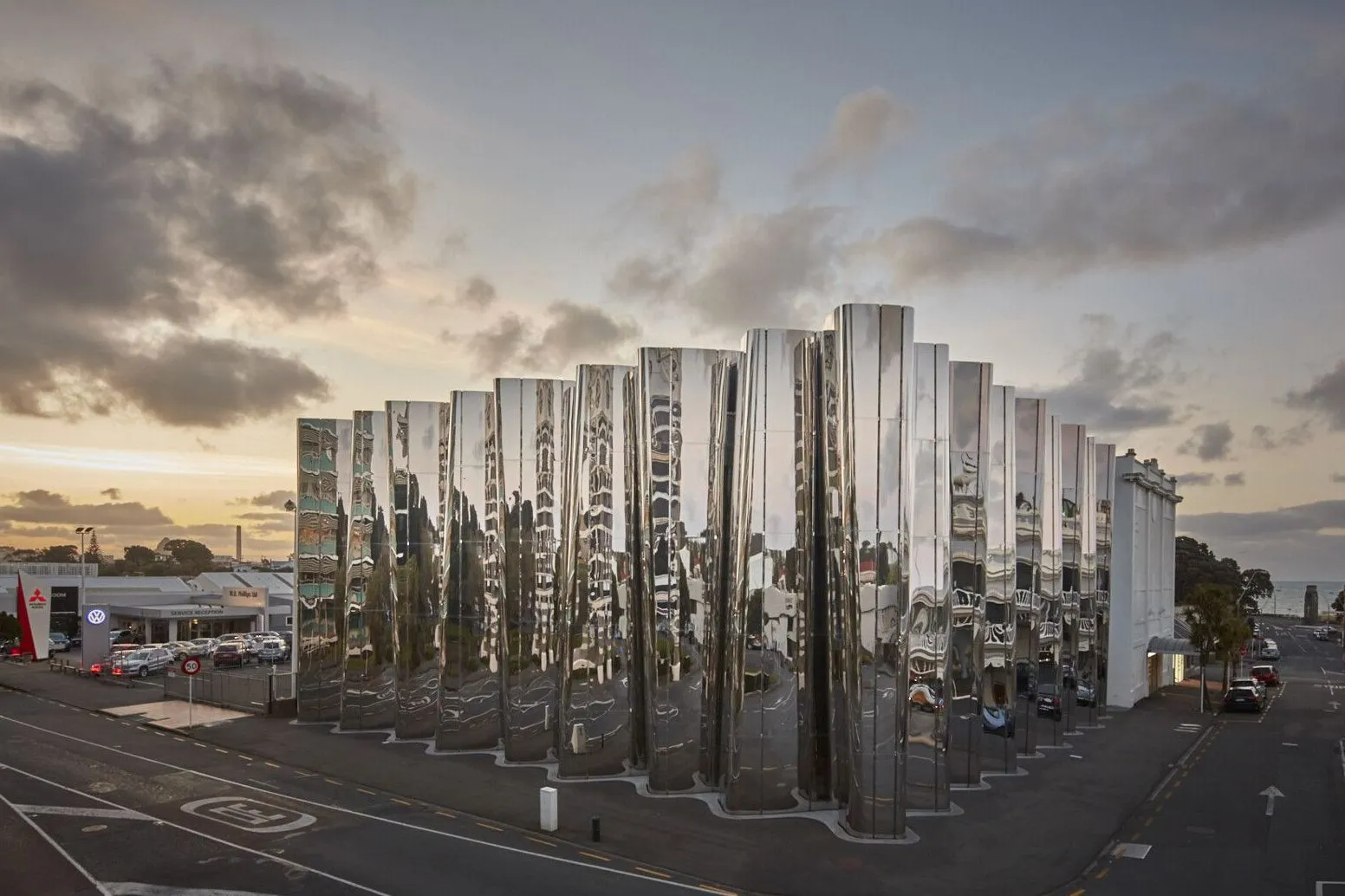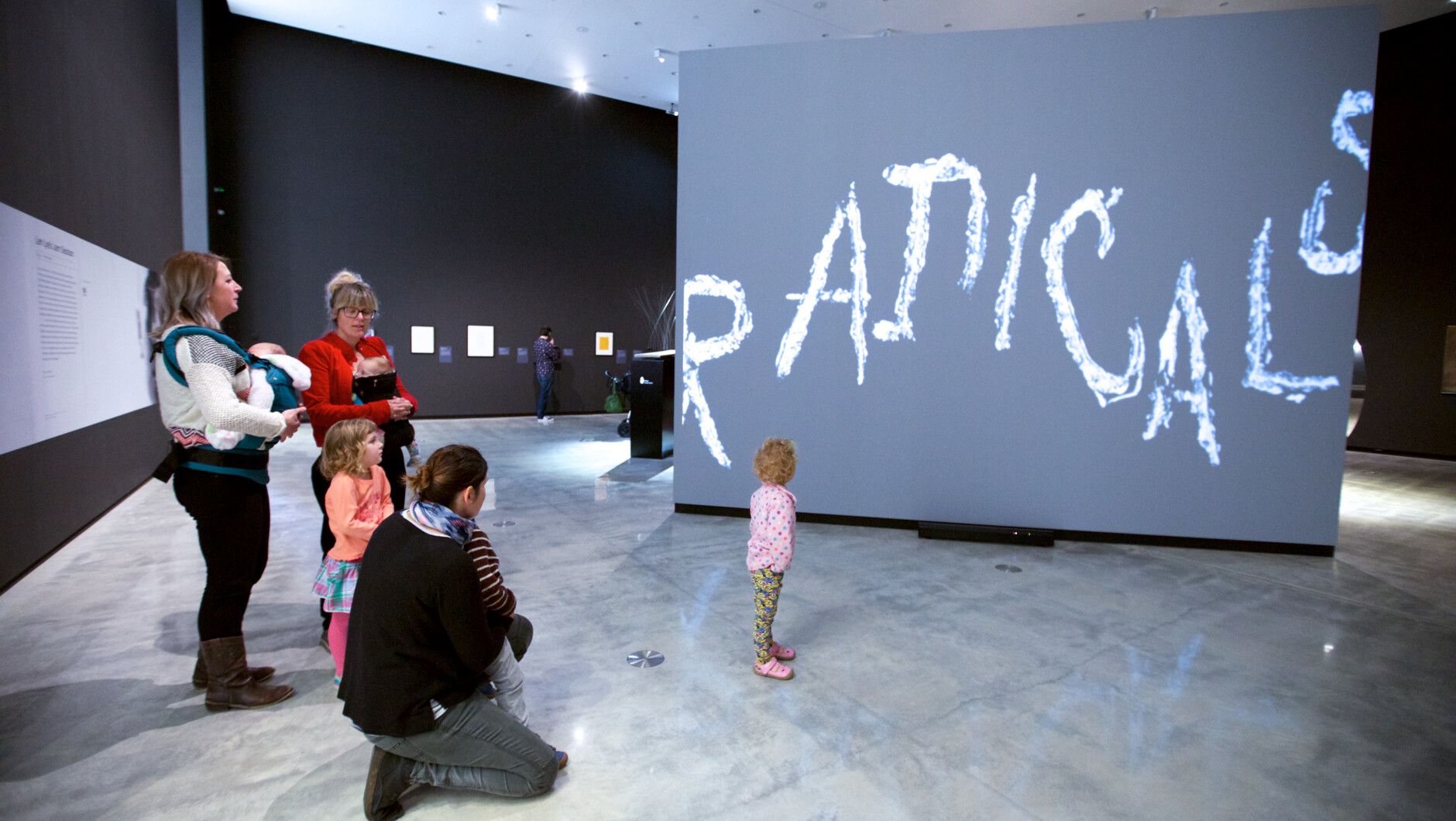Inside The Looming Changes For Govett-Brewster/Len Lye Centre
After the uproar over the restructure at City Gallery Wellington, some in the creative community are concerned about what a Council-driven "transformation" could mean for another cultural cornerstone - Andrew Wood digs deeper.

In December last year, RNZ reported that the New Plymouth District Council (NPDC) was planning a restructuring that would get rid of 17 management positions.
The Big Idea has acquired the Council’s ‘Phase 2 Presentation’ of the ‘Cultural Experiences Team Review’ for this ‘Transformation Initiative’ - and it has to be said that things look grim.
This wouldn’t be the first time an NPDC restructuring has had devastating effects on the Govett-Brewster/Len Lye Centre. The epic upheaval of 2014 just before the Len Lye Centre opened put the Govett-Brewster on the backfoot for the last decade - something that has only begun to be acknowledged in the last five years.
The main shocker is that in a move paralleling what Experience Wellington did to City Gallery, the position of Director of the Govett-Brewster Art Gallery has been disestablished and Zara Stanhope promoted diagonally to Manager Cultural Experiences.
Technically, internally, the roles of director at the Govett-Brewster and Puke Ariki were disestablished in that 2014 restructuring and retitled ‘manager’ - a longstanding method by councils to put people in their place – but in the outside world, where prestige matters, they were allowed to use the title of Director.
Previous Govett-Brewster Directors had long feared such an amalgamation, especially with the unification of New Plymouth Public Library and Taranaki Museum into Puke Ariki in 2003, with it allegedly being a frequent source of internal contention since.
This new role oversees all of the Council’s arts, culture and heritage institutions - which effectively keeps them too busy to focus on specific pet projects or anything genuinely interesting and consolidates Council control over the narratives exhibited.
Effectively this turns the Govett-Brewster from what was always an innovative and high-profile provincial gallery that rivalled the main centres with major exhibitions under powerhouse directors into something altogether less ambitious.
This is, perhaps, not all that surprising given that a tension has always existed between what a string of high-profile, occasionally controversial Govett-Brewster Directors have wanted for the gallery and what the Council of what is effectively a conservative, provincial rural service town was comfortable with.
In a similar vein, the Len Lye Centre - an organisation of international importance and once regarded as the jewel in the crown of Taranaki’s cultural holdings - has had its curatorial team slashed by half.
Perhaps this reflects dropping visitor numbers - an issue that may have something to do with the Council imposing visitor fees in 2019 - but as with most cultural destinations, this can be laid at the feet of the COVID pandemic. Even with relatively low numbers, the Len Lye Centre drives the bulk of visitor figures.
In which case, why, having introduced the position of assistant Len Lye curator in 2014 to support work at the star attraction, remove the same position a decade later?
Does this reflect a reduction in programming and research, and how will this work given the longstanding Len Lye curator, Paul Brobbel, left prior to the restructuring and is now director of Uxbridge Arts and Culture in Howick?

The Govett-Brewster and Len Lye Centre will now be sharing exhibition installation and design and front-of-house staff with Puke Ariki, New Plymouth’s amalgamated library and museum. And yet both Govett-Brewster and Puke Ariki are retaining separate education teams.
This is potentially good for Puke Ariki - specifically the museum, which has lagged behind for years - but there is an obvious issue with the original point of the Puke Ariki amalgamation being an ‘integrated centre’, but now with the Govett-Brewster stitched on like an extra limb on Frankenstein’s monster.
Rather curiously -and again in keeping with what happened with Experience Wellington - Govett-Brewster now has an Assistant Curator of Māori Art and a Pacific Public Programmes Officer. Both roles, directorial pet projects, have been in the works for a few years, but it does seem peculiar that one culture gets a curator and the other a public programmer.
I presume the difference is that one generates shows and the other books them. How, though, is that a long-term way of planning when they seem contrary to the overall logic of the restructuring?
It seems all the odder given that Puke Ariki now has a new Pacific Curator role - not previously a concern - which is unheard of for a modestly sized provincial museum in a region not exactly notable for its Pasifika community. It does rather give the impression that an agenda from Govett-Brewster has been expanded to Puke Ariki under the new umbrella. How is it that there are now more staff looking after New Plymouth’s Pacific collections, such as they are, than the Len Lye Centre?
A greater emphasis on Māori and Pasifika is by no means of itself a bad thing, obviously, but it seems rather extravagant to have multiple positions based around similar tasks while gutting others, and one can only marvel at how they rejigged the position weightings to make it even viable. Which is more than much larger institutions in bigger centres have managed.
Again, there is nothing intrinsically wrong with having these positions, and under other circumstances they would be laudable appointments, but they are going to be difficult to recruit for and come at the expense of bread-and-butter operational staff elsewhere.
Something else to consider is that while the role of Manager Cultural Experiences is now held by someone of great experience and standing in the art world – Stanhope was previously Principal Curator and Head of Programmes at Auckland Art Gallery – what happens should she leave?
It seems highly unlikely that NPDC will recruit someone as prominent and respected as Stanhope to the new role, and if previous culture leads at the Council are anything to go by, it will inevitably fall to a career bureaucrat with a community art space in their past portfolio.
That is not to pour scorn on such people, but they would be out of their league with a national taonga like the Govett-Brewster and the Len Lye Centre with their high national and international profiles and - particularly in the case of the Len Lye Centre - important research programmes of global significance.
An important question to ask is whether this reflects a domino effect among regional councils strapped for cash and alarmed at the degree of curatorial independence of the institutions they fund.
Whither, or wither, New Plymouth’s art world reputation?
Approached for comment, Zara Stanhope, currently still Director of the Govett-Brewster, Len Lye Centre and Puke Ariki had this to say:
“The proposed transformation of our Cultural Experience team, which includes Puke Ariki museum and libraries as well as the Govett-Brewster Gallery | Len Lye Centre, is part of a major review of all NPDC’s internal operations which started last year.
“The Council-wide review aims to improve what we do and how we do it to serve our communities, to be more efficient and align more closely with the Council vision to be a sustainable lifestyle capital.”
“The proposal is still in the consultation phase with everyone at those organisations, so it’s not appropriate to discuss any details publicly. Feedback from the staff may change details of the initial proposition.
“You can be assured that the integrity, legacies and future of these institutions is paramount in our thinking, and that in relation to the Govett-Brewster Art Gallery | Len Lye Centre, that the intent is to increase the support that the facility receives through the scale of working across our multiple facilities.”